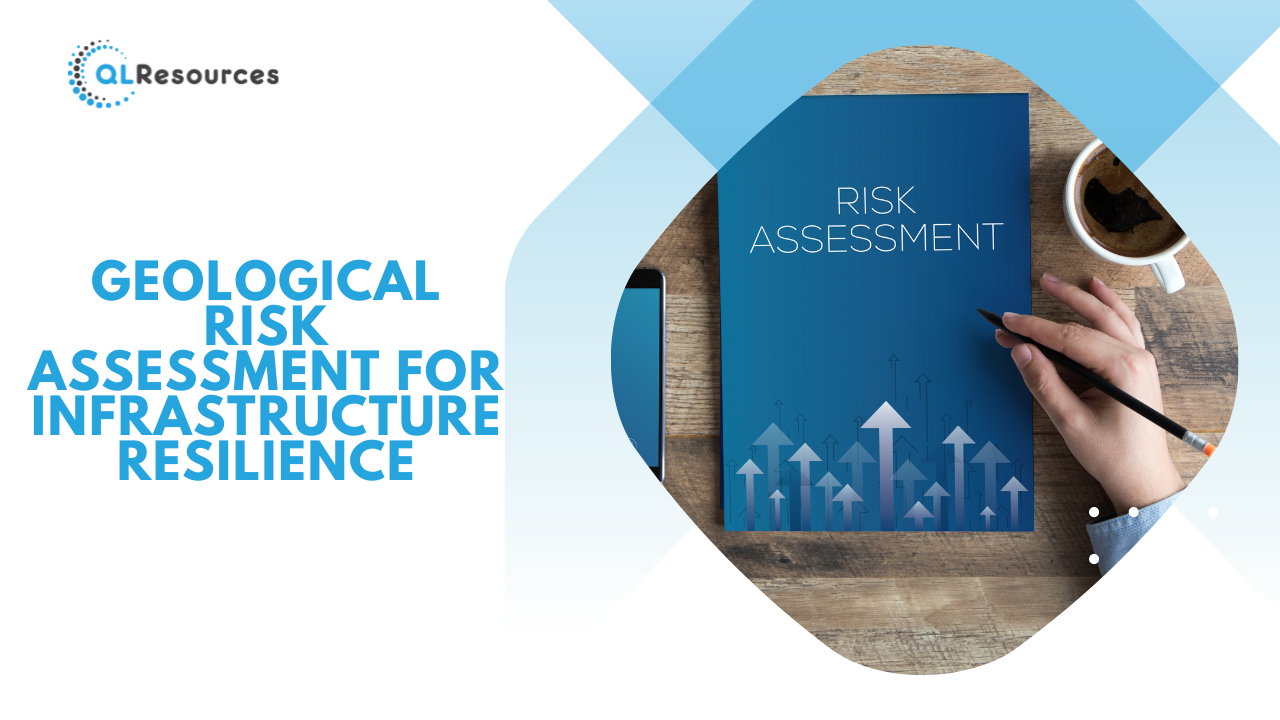
Geological risk assessment is a critical component of ensuring the resilience of infrastructure in areas prone to geological hazards. These assessments help identify and mitigate risks associated with geological phenomena, such as earthquakes, landslides, subsidence, and flooding. Here is an overview of the geological risk assessment process for infrastructure resilience:
1. Hazard Identification:
The first step is to identify and characterise geological hazards in the region where the infrastructure is located. This includes assessing the historical record of geological events, such as earthquakes, landslides, and floods.
2. Hazard Mapping:
Create hazard maps that show the spatial distribution and intensity of geological hazards. These maps help identify high-risk areas where infrastructure is vulnerable.
3. Vulnerability Assessment:
Evaluate the vulnerability of the infrastructure to geological hazards. This involves assessing the design, construction, and materials used in the infrastructure.
4. Risk Analysis:
Calculate the risk by combining information about the hazard’s likelihood and the infrastructure’s vulnerability. This step quantifies the potential impact of geological hazards on the infrastructure.
5. Uncertainty Assessment:
Recognise and account for uncertainties in hazard assessments and vulnerability evaluations. Geological events can be complex and unpredictable, so it’s essential to consider uncertainty in risk assessments.
6. Risk Mitigation Strategies:
Develop and prioritise risk mitigation strategies based on the risk assessment. These strategies may include engineering solutions, land-use planning, early warning systems, and emergency response plans.
7. Resilience Planning:
Integrate the findings of the geological risk assessment into infrastructure resilience planning. Ensure that the infrastructure can withstand or recover from geological events with minimal disruption.
8. Design Standards and Building Codes:
Establish or update design standards and building codes that take into account the geological hazards identified in the assessment. This ensures that new infrastructure is built to withstand potential risks.
9. Retrofitting and Upgrading:
Consider retrofitting or upgrading existing infrastructure to enhance its resilience to geological hazards. This may involve strengthening foundations, adding protective measures, or relocating critical facilities.
10. Monitoring and Early Warning Systems:
Implement monitoring systems that can detect precursors to geological events, such as ground deformation or changes in groundwater levels. Early warning systems can provide advance notice, allowing for timely responses.
11. Public Awareness and Education:
Educate the public, stakeholders, and decision-makers about geological risks and resilience measures. Public awareness and education are crucial for ensuring community preparedness.
12. Regulatory Framework:
Establish and enforce regulations related to geological risk assessment and infrastructure resilience. Ensure that construction and development adhere to safety standards.
13. Emergency Response and Recovery Plans:
Develop comprehensive emergency response and recovery plans in case a geological event affects infrastructure. These plans should include coordination among relevant agencies and organisations.
14. Periodic Review and Update:
Geological risk assessments should be periodically reviewed and updated to account for changing geological conditions and improved scientific knowledge.
Geological risk assessment is a dynamic process that requires collaboration among geologists, engineers, planners, and policymakers. By systematically identifying, analysing, and mitigating geological risks, infrastructure can be made more resilient, reducing the potential for damage and disruption in the face of geological hazards.